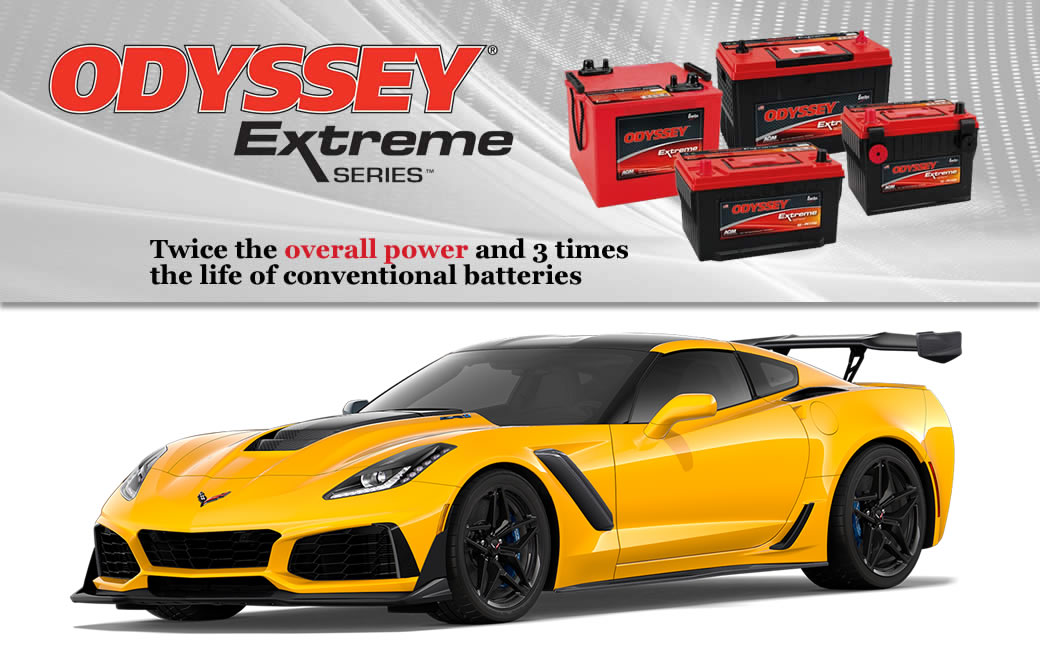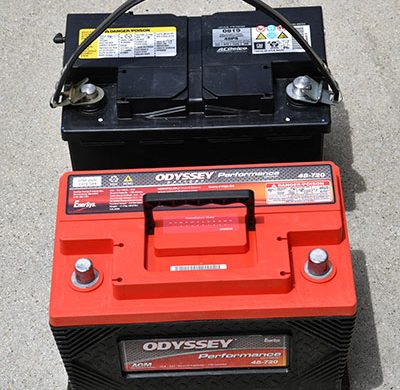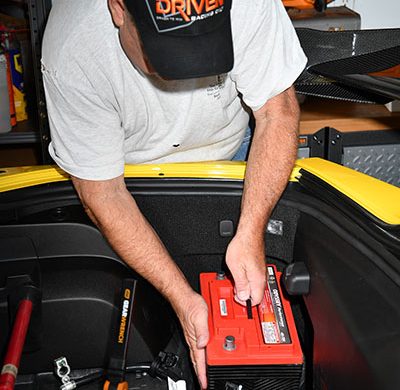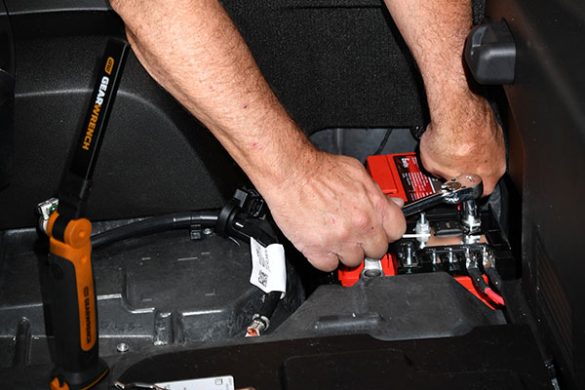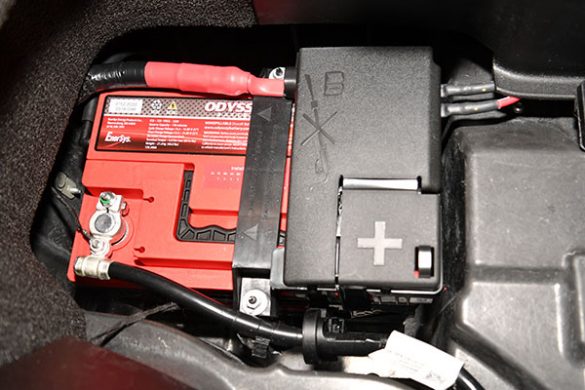At the Corvette Action Center, when we put the “Bad Black and Yellow”, our 2019 Corvette ZR1 in service, right away I began to think about an Odyssey Battery for the car. We have them in other of the Torque Network’s test cars and they have been great products. When we contacted EnerSys maker of the Odyssey Batteries, its Specialty Marketing Manager, Alan Kohler, advised that the Odyssey “Performance Series”, offers a battery (PN 48-720) which goes right into the battery box at the back of a C7 Corvette. The Odyssey Performance Battery is just a scosh lighter, at 48-pounds, vs the ACD’s 49-lbs and is more powerful.
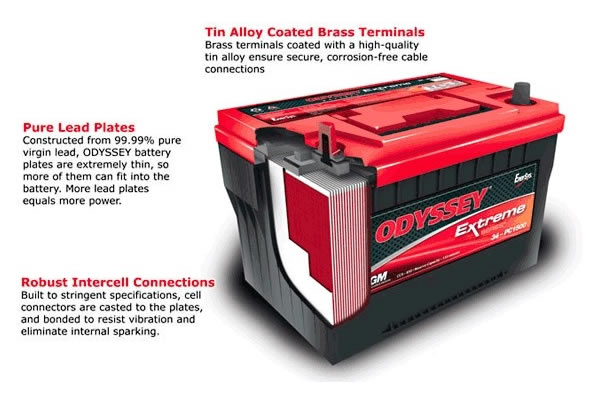
An Odyssey Battery uses the “absorbent glass mat” (AGM) design, meaning there is no free sulfuric acid sloshing around inside it. The acid is absorbed and held in the glass mat separators which, also, separate the positive and negative plates. Due to the AGM design, Odysseys can be mounted on their sides or ends, just not upside-down. There is, also, a cost advantage. Since, an Odyssey has no free acid inside, it is covered under the DOT’s “unregulated wet non-spillable electric storage battery” and International Air Transport Association (IATA) “unrestricted air shipment” classifications. Odysseys may be shipped at less expense and that reduces cost to consumers.
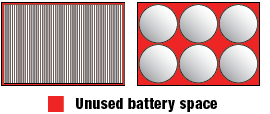 Odysseys use 99.99% pure or “virgin” lead for their plates. Pure lead plates are more expensive, but can be made thinner, so Odysseys can have more of them. More plates mean more surface area and that means more power. Most consumer-grade batteries use lead alloy which costs less but, when used in battery plates, requires them to be thicker. Another Odyssey advantage is its traditional rectangular geometry rather than the cylindrical cells used by the Optima battery. Just that better use of space results in 15% more plate area and that means still more power for starting.
Odysseys use 99.99% pure or “virgin” lead for their plates. Pure lead plates are more expensive, but can be made thinner, so Odysseys can have more of them. More plates mean more surface area and that means more power. Most consumer-grade batteries use lead alloy which costs less but, when used in battery plates, requires them to be thicker. Another Odyssey advantage is its traditional rectangular geometry rather than the cylindrical cells used by the Optima battery. Just that better use of space results in 15% more plate area and that means still more power for starting.
In last 15 years, one reason I’ve become a fan of Odysseys is their high pulse cranking current output. “Pulse hot cranking amps” (PHCA) is not the same as “cold cranking amps” (CCA). A PHCA rating test simulates very high current draw for five seconds while the engine is cranked during the starting sequence. EnerSys doesn’t put much faith in the traditional CCA rating which is derived from a 30-second test discharge at 0ºF. Unless the user is planning to actually discharge the battery that long at 0ºF, the CCA rating is irrelevant.
Corvette engines have fairly high compression ratios and the battery is in the back of the car at the end of a long, positive cable run. Both those characteristics demand a battery capable of high pulse cranking current, the maximum current flow a battery can deliver for 3-5 seconds to get that engine turning rapidly. Because of its high PHCA, an Odyssey will outperform a larger stock battery. ACDelco does not rate its products with a pulse hot cranking amps test. The PHCA rating of the Odyssey 48-720 is 1250-amps for five-seconds. If that won’t start a ZR1, or any Corvette for that matter, nothing will.
Another advantage of Odyssey Batteries is they are more tolerant of “deep cycles” than conventional batteries. Deep cycling is where you run the battery very low or dead, then fully recharge it. Most consumer-grade batteries suffer shorter service life if they are frequently deep-cycled. The Odyssey PC1200T (reviewed elsewhere) in the CAC’s 2012 Corvette Z06 has performed quite well so far, in spite my inadvertently deep-cycling it several times. EnerSys states that its batteries can withstand 400 charge-discharge cycles to 80% depth of discharge.
So, how does the Odyssey Performance series 48-720 work in the real world? We’ve run it for three months and have observed it to be compatible with the C7’s sophisticated, computer-controlled charging system. It is our belief that not all aftermarket batteries may support that system’s enhanced control over battery and charge system voltage. During that three months, we’ve noted no unusual starting behavior and slightly higher cranking rpm.
Odysseys are shipped fully charged, so, unless you keep it on the shelf for several years prior to installation; you can take it out of the box, put it in your Corvettes, then start-up and go.
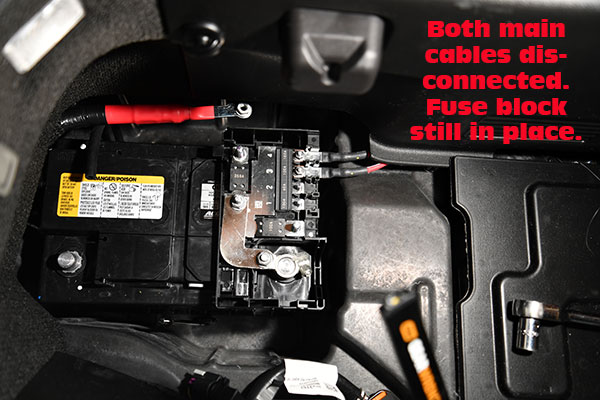
The battery is at the right rear corner of the the cargo area in a well beneath the rear carpet panel and a battery well cover. The battery installation procedure is a bit difficult. First, remove the two cargo tie downs. Then, roll the carpet over to left side of the cargo area and remove the battery well cover. Once you have the battery exposed, remove the negative cable. The positive battery cable goes through a “battery fuse block”, common on newer GM vehicles, and then to the positive post. Disconnect both the main positive cable and the short cable between the fuse block and the positive post, then unlatch the fuse block from the battery. Fold the cable and fuse block out of the way. Remove the two battery hold-downs, then lift the battery out using a battery strap. It has an integral handle which makes handing easy. Lower the Odyssey in place. Reinstall the hold downs, fold the battery fuse block back over the top of the Odyssey and tighten the positive battery cable and reconnect the negative cable. Replace the well cover, unroll the carpet, bolt the cargo tie downs and you’re done.
Bottom line: If you want the best battery for a 2019 Corvette ZR1 or any C7 Corvette, buy an Odyssey.
Want more info? Visit the Odyssey Battery web site.

